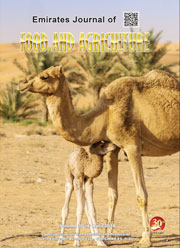NUTRITIONAL AND FUNCTIONAL PROPERTIES OF ROSELLE (HIBISCUS SABDARIFFA L.) SEED PROTEIN HYDROLYSATES
DOI:
https://doi.org/10.9755/ejfa.v26i5.15508Keywords:
Enzymatic hydrolysis, Functional Properties, Nutritional quality, Protein isolates, Roselle seedAbstract
The nutritional and functional properties of Roselle seed protein hydrolysates (RSPH) were studied. Roselle seed protein isolates were digested (for 1.5 h and 3h) using pepsin followed by pancreatin. The maximum nitrogen solubility values of 94.17 and 90.8 were observed at pH 12 and pH 10 after 1.5 h and 3 h of hydrolysis, respectively. RSPH1.5 and RSPH3 exhibited a good foaming capacity of 310 and 300% respectively. Furthermore, RSPH1.5 showed the best foaming stability (300%) after 60 min compared to RSPH3 (144%) at the same time. For both hydrolysates, the amounts of essential amino acids exceeded those recommended by the Food and Agricultural Organization/World Health Organization (2007) for humans. The emulsifying capacity of RSPH1.5 was higher than that of RSPH3 90 and 100 mL/g respectively. RSPH1.5 possessed also the highest water holding and oil holding capacities compared to RSPH3. RSPH3 was more heat sensitive than RSPH1.5. The denaturation temperature for RSPH1.5 and RSPH3 were 95.80ºC and 85.93ºC respectively. Our results demonstrated that RSPH may be used wholly or partially to replace high-price materials like egg albumen and casein as well as a potential food ingredient.










 .
. 